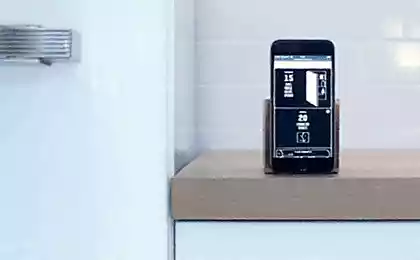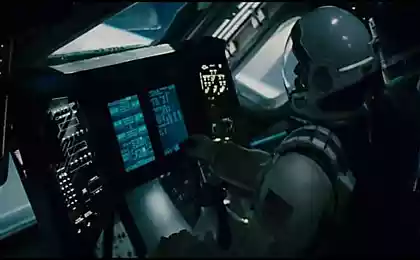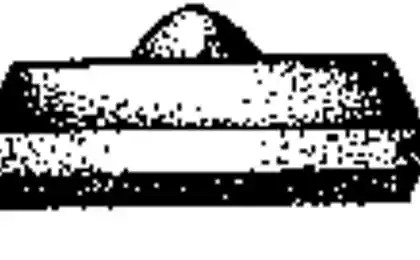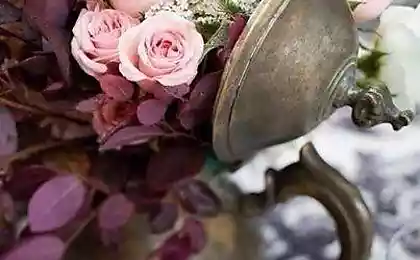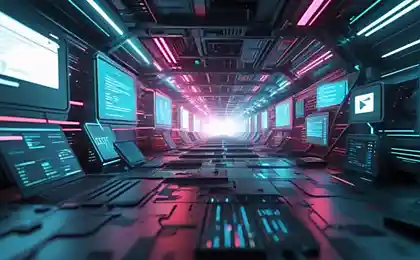573
How dangerous is the Internet of things, and whether its even possible to create?
What we now sees the Internet of things? A world where devices of all types and stripes collect information about the environment and communicate with each other for the sake of increasing their own efficiency and productivity, preventive awareness of the problems of optimization of various processes and maintaining human health. Not peace, but the idyll.

Well, the goal is remarkable and worthy of respect. The media has already started to flash the victorious reports on the advent of the Internet of things as a fait accompli. But the concept of information network, proizvodilas the world is not only ardent fans. From votes many skeptics who Express reasonable doubt, cannot be dismissed. The most critically-minded citizens even believe that the Internet of things not just yet, but it will never be created.
What is he so objectionable?
From the point of view of skeptics, most of the promoted concept of the Internet of things are the good old automation technology and machine-to-machine communications (machine–to–machine, M2M), massively used for ten years, if not more. And the balance falls on the proprietary technologies of home automation that solve trivial tasks and has a bunch of security holes.
Do we need to connect everything with everything? If the apartment or house, the vast majority of items will be included in a single network, how to solve almost inevitable problems of interference? The essence of the Internet of things precisely in the fact that each component performs its functions depending on the data received from other network members. Imagine that your door lock is mistakenly assumed that you are not home, and forcibly de-energize all home, except, for example, of the refrigerator. Or Vice versa — would activate the set programs for different devices thinking that you are at home, although it is not? Can you think of any scenarios where certain devices will not work as intended, or not at all. Search of root causes will become an incredibly difficult task, given the huge number of dependencies and relationships. And half the trouble, if something fails just give you an annoying inconvenience, but if there is a threat to the health or even life? For example, the bathroom light was switched off due to a glitch on your home server, and your grandmother slipped in the dark?
Now think about the most important — an intentional break-in. Daily infected by various Trojans, baccarani and other junk infected huge numbers of computers around the world. The use of botnets has evolved into a full-fledged shady business with high turnover. And that you will feel relaxed, even if the door handle in your home will get a network module and sensors, and appliances with processors and RAM? Yes, we will surely be swamped with all kinds of infections and failures, the criminals will be able to access our local home "clothing" networks. It's one thing when you got some Trojan on his home computer, in which nothing particularly important, and quite another when someone can control a lot of devices in your home — heater, refrigerator, stove, kettle, door lock, electric network, etc. — affecting you physically. Oh yeah, because we are still few years promise unmanned vehicles.
Agree, a fascinating perspective emerges.
You now probably want to say about the encryption algorithms and other firewalls. But what do you think, how many ordinary people will — and can — be doing this? Yeah at least change my master password?

Yesterday's technology today that we give for the coming Internet of things, is a bunch of disparate proprietary systems, in large quantities using cheap sensors, cheap computing modules and the communication modules.
This situation has arisen not on an empty place. Just the vast majority of the proposed scenarios for the use of the Internet of things do not promise anything new. Even such a seemingly modern and innovative ideas on how the management of heating and ventilation of buildings, diagnostics of aircraft engines, the selection scheme of plowing depending on the weather and soil quality, monitoring the status of perishable products during shipment, the definition of pre-emergency state of the industrial equipment, management of production lines on the basis of data on supplies of raw materials and components — all this was offered even ten years ago. Just then it was not called "Internet of things".
The difference between "then" and "today" is only in the fact that all of these and many other ideas can be implemented much cheaper and adapted to a wider range of fields. Now we have cell phones, local wireless networks, cheap cloud services for processing and storage of transmitted data. Also each of us in his pocket is a client device, smartphone or tablet — which you can use to control the former networks.
Although IOT is not yet created standard APIs and protocols, but has shown the emergence of a kind of centers of gravity: Apple HomeKit, AllSeen consortium, Open Interconnect, and possibly Google Threads and Google Works with Nest Protocol.
Specialized networks May want to come up with new names for old technologies and ideas, and continue to do what we are already doing — to create a large number of separate specialized networks of specialized components? At least they can optimize different processes and technology stacks, to ensure safety. It is extremely unlikely that it will be possible to create a versatile technology stack, nothing good comes out of these attempts probably won't work.
Yes, in dwellings it makes sense to connect some devices: thermostat, stove, fire detectors, door locks, surveillance cameras and an alarm system; or to tie together the TVs, gaming consoles and computers. Such clusters can benefit. But why networked heterogeneous clusters? In an extreme case can be applied to control each of the clusters separate devices — a smartphone, tablet, computer.
For commercial and industrial applications the independence of the disparate network clusters is particularly important. Otherwise, you can end up in a situation, for example, when using Wi-Fi router on the plane, it will be possible to penetrate into the onboard network and to make mischief. This is possible only in one case — if in a single network combined of different clusters: the aircraft avionics and wireless infrastructure for passengers. Such short-sighted decision, as it turned out, used in Boeing 737 MAX. In fact, here is an embedded approach for the Internet of things.
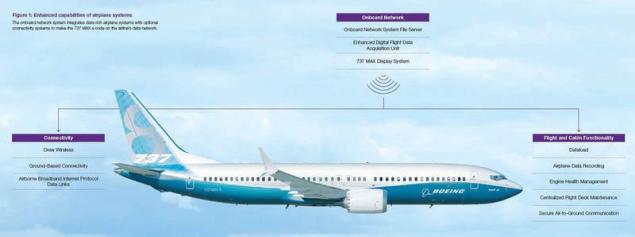
Too, the probability of vulnerability of generalized networks. And the best option would be to use the approach with a separate specialized networks, rather than trying to harness a carriage horse, quivering DOE, a Swan, cancer, pike, the list goes on zoo.
In some cases, it is sufficient to limit the separation of VLANs. In some situations, it is advisable to divide the network physically, depends on the situation. Sometimes it is best to use even different network technologies. For example, some critical components (e.g., smoke detectors) to better connect with each other through a separate network channel, and not using public Wi-Fi. Otherwise, if the router does not work, then you will be left without a fire alarm. Such a deep separation of networks, again, is better applied in industry or commercial organizations.
By the way, in addition to the "iron" component of the Internet of things is necessary to mention software. Because the data exchange between different devices needs to provide using the relevant API that supports all possible data types and thousands of types of devices. For example, your music player will be able to communicate with the microwave. Well, here's what they had to each other "tell" is so useful? Why should they be networked? And how difficult will be the development and support of this versatile interface, capable of working in lubiprostone and devices?
Given all the above arguments, the skeptical viewpoint is this: probably under the "Internet of things" we will receive not a General public network, and numerous proprietary clusters, promoted and supported by different manufacturers. Surely the struggle for the client expressed in the fact that each manufacturer will try to convince the users on your system. Maybe someday and there will be convincing reasons and reliable technology for the transition to the common network, but so far it doesn't look appropriate. published
P. S. And remember, only by changing their consumption — together we change the world! ©
Join us in Facebook , Vkontakte, Odnoklassniki
Source: geektimes.ru/company/asus/blog/263488/

Well, the goal is remarkable and worthy of respect. The media has already started to flash the victorious reports on the advent of the Internet of things as a fait accompli. But the concept of information network, proizvodilas the world is not only ardent fans. From votes many skeptics who Express reasonable doubt, cannot be dismissed. The most critically-minded citizens even believe that the Internet of things not just yet, but it will never be created.
What is he so objectionable?
From the point of view of skeptics, most of the promoted concept of the Internet of things are the good old automation technology and machine-to-machine communications (machine–to–machine, M2M), massively used for ten years, if not more. And the balance falls on the proprietary technologies of home automation that solve trivial tasks and has a bunch of security holes.
Do we need to connect everything with everything? If the apartment or house, the vast majority of items will be included in a single network, how to solve almost inevitable problems of interference? The essence of the Internet of things precisely in the fact that each component performs its functions depending on the data received from other network members. Imagine that your door lock is mistakenly assumed that you are not home, and forcibly de-energize all home, except, for example, of the refrigerator. Or Vice versa — would activate the set programs for different devices thinking that you are at home, although it is not? Can you think of any scenarios where certain devices will not work as intended, or not at all. Search of root causes will become an incredibly difficult task, given the huge number of dependencies and relationships. And half the trouble, if something fails just give you an annoying inconvenience, but if there is a threat to the health or even life? For example, the bathroom light was switched off due to a glitch on your home server, and your grandmother slipped in the dark?
Now think about the most important — an intentional break-in. Daily infected by various Trojans, baccarani and other junk infected huge numbers of computers around the world. The use of botnets has evolved into a full-fledged shady business with high turnover. And that you will feel relaxed, even if the door handle in your home will get a network module and sensors, and appliances with processors and RAM? Yes, we will surely be swamped with all kinds of infections and failures, the criminals will be able to access our local home "clothing" networks. It's one thing when you got some Trojan on his home computer, in which nothing particularly important, and quite another when someone can control a lot of devices in your home — heater, refrigerator, stove, kettle, door lock, electric network, etc. — affecting you physically. Oh yeah, because we are still few years promise unmanned vehicles.
Agree, a fascinating perspective emerges.
You now probably want to say about the encryption algorithms and other firewalls. But what do you think, how many ordinary people will — and can — be doing this? Yeah at least change my master password?

Yesterday's technology today that we give for the coming Internet of things, is a bunch of disparate proprietary systems, in large quantities using cheap sensors, cheap computing modules and the communication modules.
This situation has arisen not on an empty place. Just the vast majority of the proposed scenarios for the use of the Internet of things do not promise anything new. Even such a seemingly modern and innovative ideas on how the management of heating and ventilation of buildings, diagnostics of aircraft engines, the selection scheme of plowing depending on the weather and soil quality, monitoring the status of perishable products during shipment, the definition of pre-emergency state of the industrial equipment, management of production lines on the basis of data on supplies of raw materials and components — all this was offered even ten years ago. Just then it was not called "Internet of things".
The difference between "then" and "today" is only in the fact that all of these and many other ideas can be implemented much cheaper and adapted to a wider range of fields. Now we have cell phones, local wireless networks, cheap cloud services for processing and storage of transmitted data. Also each of us in his pocket is a client device, smartphone or tablet — which you can use to control the former networks.
Although IOT is not yet created standard APIs and protocols, but has shown the emergence of a kind of centers of gravity: Apple HomeKit, AllSeen consortium, Open Interconnect, and possibly Google Threads and Google Works with Nest Protocol.
Specialized networks May want to come up with new names for old technologies and ideas, and continue to do what we are already doing — to create a large number of separate specialized networks of specialized components? At least they can optimize different processes and technology stacks, to ensure safety. It is extremely unlikely that it will be possible to create a versatile technology stack, nothing good comes out of these attempts probably won't work.
Yes, in dwellings it makes sense to connect some devices: thermostat, stove, fire detectors, door locks, surveillance cameras and an alarm system; or to tie together the TVs, gaming consoles and computers. Such clusters can benefit. But why networked heterogeneous clusters? In an extreme case can be applied to control each of the clusters separate devices — a smartphone, tablet, computer.
For commercial and industrial applications the independence of the disparate network clusters is particularly important. Otherwise, you can end up in a situation, for example, when using Wi-Fi router on the plane, it will be possible to penetrate into the onboard network and to make mischief. This is possible only in one case — if in a single network combined of different clusters: the aircraft avionics and wireless infrastructure for passengers. Such short-sighted decision, as it turned out, used in Boeing 737 MAX. In fact, here is an embedded approach for the Internet of things.

Too, the probability of vulnerability of generalized networks. And the best option would be to use the approach with a separate specialized networks, rather than trying to harness a carriage horse, quivering DOE, a Swan, cancer, pike, the list goes on zoo.
In some cases, it is sufficient to limit the separation of VLANs. In some situations, it is advisable to divide the network physically, depends on the situation. Sometimes it is best to use even different network technologies. For example, some critical components (e.g., smoke detectors) to better connect with each other through a separate network channel, and not using public Wi-Fi. Otherwise, if the router does not work, then you will be left without a fire alarm. Such a deep separation of networks, again, is better applied in industry or commercial organizations.
By the way, in addition to the "iron" component of the Internet of things is necessary to mention software. Because the data exchange between different devices needs to provide using the relevant API that supports all possible data types and thousands of types of devices. For example, your music player will be able to communicate with the microwave. Well, here's what they had to each other "tell" is so useful? Why should they be networked? And how difficult will be the development and support of this versatile interface, capable of working in lubiprostone and devices?
Given all the above arguments, the skeptical viewpoint is this: probably under the "Internet of things" we will receive not a General public network, and numerous proprietary clusters, promoted and supported by different manufacturers. Surely the struggle for the client expressed in the fact that each manufacturer will try to convince the users on your system. Maybe someday and there will be convincing reasons and reliable technology for the transition to the common network, but so far it doesn't look appropriate. published
P. S. And remember, only by changing their consumption — together we change the world! ©
Join us in Facebook , Vkontakte, Odnoklassniki
Source: geektimes.ru/company/asus/blog/263488/
How to save yourself from extra work: 4 great ideas
House in the style of cordwood: the ability to build a house almost single-handedly!



